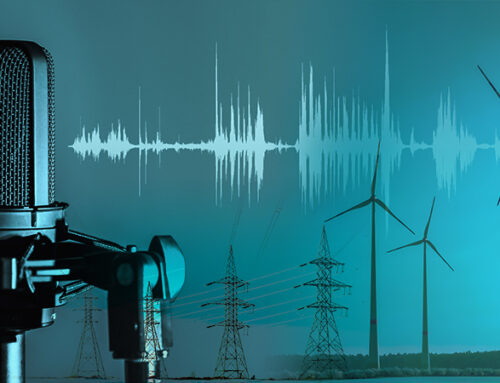I wrote recently about the challenges being faced in Australia as a result of the rapid deployment of renewable generation. Similar problems are being seen in the Californian electricity market where progress against ambitious renewable generation targets has led to a collapse in wholesale prices while retail electricity prices reach record highs. At the same time, consumers face the risks of blackouts as the thermal plants needed to meet afternoon peak requirements are exiting the market.
Regulation is failing to keep pace with market change
California’s electricity market is undergoing unprecedented change according to a recent white paper from California Public Utilities Commission. Technological innovations and policy decisions, particularly in support of renewable generation, have led to an explosion of rooftop solar, and alongside Community Choice Aggregators (“CAAs”) and Direct Access providers (“ESPs”), as much as 25% of Investor-Owned Utility (“IOU”) retail load will be effectively unbundled and served by non-IOU sources this year. This share is set to grow quickly, possibly reaching 85% of retail demand by the mid-2020s.
This effective unbundling is occuring spontaneously and is not underpinned by explicit regulatory decision-making. Following the 2000 energy crisis, California reversed the market de-regulation and returned to three IOUs as the dominant and monopoly providers of retail electric services for most California consumers, while continuing to restrict their ownership of electricity generation.
The current market changes fundamentally challenge the regulated utility business model which assumes that IOUs will be able to recover the costs of providing a secure and reliable service through retail rates. As their customer base falls their costs must be recovered from a smaller pool of consumers which acts as a further incentive for rooftop solar installation, which through net metering, further reduces the IOU’s income.
The famous California “duck curve”
The rapid deployment of renewable generation has had a major impact on the supply and demand balance. The famous California “duck curve” is not some trend in poultry husbandry, but a graphic representation of the impact of higher levels of wind and solar on the grid during the day resulting in a high peak load in mid to late evening. The duck curve shows two high points of demand and one very low point of demand, with the ramp up in between being extremely sharp…..hence the distinctive duck-shape. As renewable energy penetration increases, the duck curve is appearing more often and is getting more pronounced.
The chart shows the electric load of the California grid, on an average spring day. The lines show the net load (electricity demand the supply of renewable energy), with each line representing a different year. The chart shows that energy demand peaks between 6-9 am and 6 and 9pm. The line for 2012 is far smoother than the most recent line as in 2012 renewable generation had yet to be installed – as solar energy had been introduced, the net electricity demand has fallen, however, as the second peak develops, the sun is setting, meaning that demand on the grid ramps very quickly into the evening peak.

During the day, peaker plants don’t run and baseline plants will be ramped down, however the rapid increase in demand later in the day means that these plants need to come back up very quickly, which is not only expensive, but could lead to more pollution and high maintenance costs. This fast ramping can also come with little or no warning, which can cause problems for grid stability.
Grid operators are looking towards storage to try to manage these problems. Traditional storage in the form of hydro was drastically reduced due to a record drought which saw hydro output drop by two thirds between 2011 and 2016, losing 65.6 TWh of generation over the period. A study by the Pacific Institute in Oakland found that this lost hydro-power production may have cost the state almost US$ 2.5 billion in higher power prices as other forms of generation, particularly CCGTs and imports from other states, had to step in to plug the shortfall.
California has 14 GW of hydro capacity, which typically supplies about 18% of the state’s electricity needs. This dropped to 7% in 2015, the driest year of the drought. The recovery of hydro after a wet winter in 2016 has further boosted renewable capacity exacerbating pricing pressures in the market.
High electricity prices hurt end users
Californian electricity prices are extremely high by American standards – about 50% above the national average according to the LA Times, which identifies the causes as being both the de-regulation of the market in the late 1990s and the construction of regulated, rate-based plants in response to the 2000 energy crisis which led to the state having higher installed generation capacity than the historical norm.
This blog price by the Energy Institute at Haas argues that California’s renewable electricity policy should also share the blame, pointing out that since the energy crisis, the dominant policy driver in the sector has been the development of renewable sources of generation. California has one of the most ambitious renewable portfolio standards (“RPS”) in the country, which requires each electricity supplier to procure an increasing proportion of its electricity from renewable sources (33% by 2020 rising to 50% by 2030).
While the policy has been effective at curbing carbon emissions from the power sector, it has also disrupted its economics, leading to a rapid replacement of conventional generation with wind and solar generation. Since 2010, 80% of new capacity has come from renewable source, much of which may never have been built had it not been for the RPS.
Supporters of the RPS argue that new contracts for renewable energy award prices comparable to those for new conventional gas plants, however this ignores the different generating capabilities of the two types of plant, and overlooks the fact that the state does not currently need new capacity of any kind, so the construction of new renewable generation is adding to the excess capacity problem. By forcing the early retirement of legacy power plants, the state is contributing to higher electricity prices, and by requiring the RPS targets to be met by in-state sources, there is a risk that newer, cleaner conventional plants as well as older less efficient ones will be forced into premature closure.
Negative wholesale prices cause further disruption
Another effect of the RPS has been to flood an already well-supplied market with low marginal cost energy, thereby driving down wholesale prices. This increases the reliance of renewable generators on subsidies as market prices are too low to support new capacity. Added to this is the cost of the new transmission lines needed to connect this new renewable generation to the grid – the Tehachapi transmission project alone is forecast to cost over US$ 2 billion.
The result is rising consumer prices at a time when conventional generators are struggling to make money with low or even negative wholesale prices, and are exiting the market, despite the fact that significant conventional generation is still needed to meet the evening peak when solar generation falls away.
“Negative pricing is driven by a hard-to-fathom dynamic in any efficient market. At times, it is more efficient for energy producers to give energy away free or even pay consumers to take their power plants’ generation than to curtail production because the shutdown and start-up of the plant may cost them more.” – Jeff Bladen, the Market Services Executive Director for the Midcontinent Independent System Operator.
The end of the drought saw a rainy winter bringing significant hydro generation back onto the grid, which together with new solar projects has significantly increased the instance of negative pricing in the state. This in turn has resulted in more instances of renewable generation being curtailed by the system operator. According to Guillermo Bautista Alderete, CAISO’s Market Analysis Director, of the 288 daily 5-minute intervals, an average of 31% were curtailed in the first three months of 2017, compared with 15% in 2015 and 21% in 2016.

However not all resources can be curtailed (hydro is typically exempt as curtailment can affect river flows with negative consequences for wildlife habitats) and some gas plants are very expensive to shut down completely, so the system operator is not able to avoid some degree of negative pricing despite its best efforts to the contrary. According to the Brattle Group, financial incentives for renewable generators mean that they can absorb significantly negative market prices and still be profitable. The pre-tax value of the federal production tax credit for wind has a value up to US$ 37 /MWh so operators can afford to see as low as minus US$ 25 /MWh and still benefit. Wind and solar producers also incur penalties if they fail to deliver under the RPS.
Creation of a super-grid for the American West, based on distributed energy resources
Currently, California is part of the Western Interconnection, a wide area synchronous grid stretching from Western Canada south to Baja California in Mexico, and reaching eastward over the Rockies to the Great Plains. From a balancing perspective, California participates in the Energy Imbalance Market (“EIM”), which is a real-time market involving eight western states where the difference between day ahead forecasts and actual real time supply and demand is traded. There are currently 38 balancing authorities controlling different parts of the system, the largest of which is CAISO which covers about a quarter of the Western grid’s total generation and consumption.
As well as looking to electricity storage to address the challenge of the duck curve, another solution could be to merge the Californian electricity gird with those of its neighbours within the Western Interconnection. According to this study, a merged grid could cut consumer electricity bills by more than US$ 1.5 billion a year by removing some of the inefficiencies of renewable deployment in a relatively modest areas. The resulting super-grid could integrate the PacifiCorp network with the California grid, adding a six-state area including Utah, Wyoming and Oregon.
Inter-state co-operation has long been held back by local squabbles, concerns over federal over-reach and the legacy of the 2000 Californian energy crisis, however the political desire for increased renewable penetration is beginning to overcome these barriers. Grid integration would in theory allow a portfolio effect to smooth the renewable intermittency across these states, avoiding the need for any individual state to over-build either wind or solar plants to meet peak demand.
In particular, by allowing surplus Californian renewable generation to be delivered into neighbouring states, those states would be able to reserve their hydro resources for times when it is needed in California. If these actions are planned in advance the hydro curtailment could be managed to avoid harmful impacts on habitats.
According to Jim Caldwell, senior technical consultant for the Centre for Energy Efficiency and Renewable Technologies, a regulatory “work-around,” could allow Northwest hydro to replace fossil fuels in California’s peak demand energy mix:
“California would use the Pacific Northwest like a giant battery. It would not be frictionless, but it is manageable if they plan in advance…..we think we can get 80% or more of the benefit that we could from a regional market.”
A longer-term solution would be the construction of more transmission capacity and the integration of regional grids so that high output of any type can be moved to wherever power is needed.
Technology and policy innovation both needed to stabilise the market
Along with the New York regulators, the Californian ISO, has legislated to incentivise utilities to move away from a centralised model to a more distributed system. Under a pilot scheme, utilities are earning incentive payments for replacing centralised projects with distributed energy resources. This initiative is supported by the relatively high penetration of smart meters in the state which is capable of providing a large amount of granular consumption data. Further regulatory change will be needed to deliver a smooth transition to an electricity system dominated by renewable energy, including integration with neighbouring electricity systems.
At the same time, Californian utilities are pioneering a number of innovative storage schemes such as PG&E’s collaboration with BMW to use grid-connected electric vehicles for load smoothing, backed by a stand-alone storage facility comprised of re-purposed EV batteries. PG&E also has a 20 MW flywheel storage pilot with Amber Kinetics to explore use of flywheels for grid stabilisation, and the California Public Utilities Commission approved 100 MW of energy storage projects for both Southern California Edison and also San Diego Gas & Electric following the closure of a large natural gas reservoir due to a major leak, including a 20 MW battery storage facility in Ontario, California, built by Tesla.
The Californian electricity market provides a number of interesting lessons for policymakers elsewhere. The 2000 electricity crisis illustrates the dangers of retail price caps, while the problems with high prices, renewable curtailment, and blackout risks indicate the challenges imposed by ramping up renewable generation without addressing the associated challenges of grid stability and transmission capacity. The pursuit of renewable generation to the exclusion of all else can be costly in more than just financial terms.







“a collapse in wholesale prices while retail electricity prices reach record highs. At the same time, consumers face the risks of blackouts ”
So it’s a win, win, win situation…
for the rich green Luddites …
who will continue to fly private jets around the world in order to tell others not to fly & would see the general population return to the stone age, while the few ‘chosen ones’ live in sumptuous (energy powered) luxury.
What a brave new world.
“According to this study, a merged grid could cut consumer electricity bills by more than US$ 1.5 billion a year by removing some of the inefficiencies of renewable deployment in a relatively modest areas”
Translation: spreading the impact of insanely bad choices so that the cost of them is spread over a far wider consumer area will reduce the cost impact to Californians who voted for all this rubbish, and shift the burden onto other states, who didn’t.
Great job, now it is time to replace crop land with solar cells to power the zillion dollar bullet train that also took a million acres of crop land. Then you can inform your customers that they pay double for electricity and get to see solar cells and wind turbines everywhere that was once the beautiful State of California.